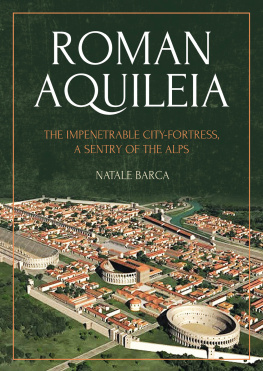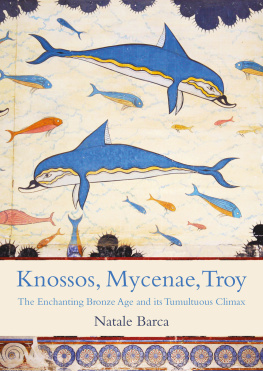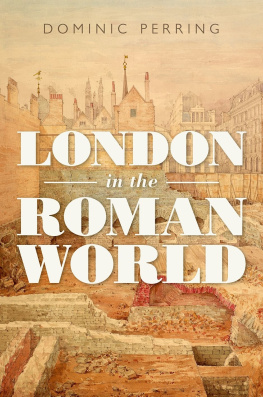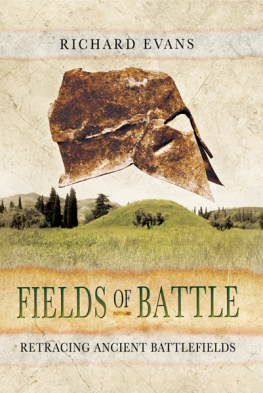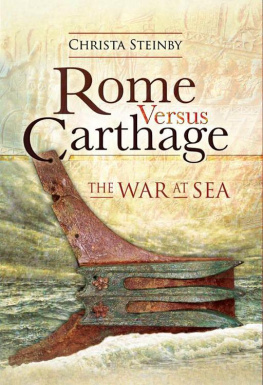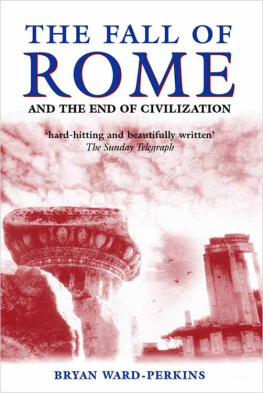

Published in the United Kingdom in 2022 by
OXBOW BOOKS
The Old Music Hall, 106108 Cowley Road, Oxford, OX4 1JE
and in the United States by
OXBOW BOOKS
1950 Lawrence Road, Havertown, PA 19083
Oxbow Books and the author 2022
Paperback Edition: ISBN 978-1-78925-774-8
Digital Edition: ISBN 978-1-78925-775-5
A CIP record for this book is available from the British Library
Library of Congress Control Number: 2021950254
All rights reserved. No part of this book may be reproduced or transmitted in any form or by any means, electronic or mechanical including photocopying, recording or by any information storage and retrieval system, without permission from the publisher in writing.
Printed in the United Kingdom by Short Run Press
Typeset in India by Lapiz Digital Services, Chennai.
For a complete list of Oxbow titles, please contact:
UNITED KINGDOM
Oxbow Books
Telephone (01865) 241249
Email:
www.oxbowbooks.com
UNITED STATES OF AMERICA
Oxbow Books
Telephone (610) 853-9131, Fax (610) 853-9146
Email:
www.casemateacademic.com/oxbow
Oxbow Books is part of the Casemate Group
Front cover: IKON, A digital farm of Staranzano, Italy
Contents

Map 1. Localization of Aquileia, Italy
Abbreviations
| Ambr. | Ambrose, Epistolae |
| Amm. Marc., Res Gestae | Ammianus Marcellinus, Rerum Gestarum |
| App. Ill. | Appian, Hellenik |
| App. Mac. | Appian, Macedonik |
| Auson. | Ausonius, Ordo urbium nobilium |
| Athanasius | Athanasius, Apologia ad Constantium |
| Cato | Cato, Oratio de re Histriae militari |
| Caes. | Caesar, Bellum Gallicum |
| Cic. | Cicero, Brutus or De Claribus Oratoribus |
| Claud. | Claudianus, De Consulatu Honorii |
| Claud., In Ruf. | Claudianus, In Rufinum |
| Cl | Codex Iustinianus |
| CTh | Codex Theodosianus |
| Dio Cass. | Dio Cassius, Historia romana |
| Epit. de Caes. | Epitome de Caesaribus (in Teubner Aur. Vic. Caes. ed. F. Pichlmayer 1911, pp. 133-76) |
| Eutrop. | Eutropius, Flavius, Breviarum ab urbe condita |
| FastTr | Fasti Triumphales |
| FastCons. | Fasti Consulares |
| Flor. | Florus, Epitomae de Tito Livio Bellorum omnium annorum DCC |
| Frontin. | Frontinus, Stratagemata |
| Herodian. | Herodianus, Historia Augusta |
| Hyd. | Hydatius, Chronicon |
| Hieron. | Jerome, De viris illustribus (in von Gerbhart 1896) |
| InscrIt | Inscriptiones Italicae (Rome, 1931-) |
| Inscr. Aq. | Inscriptiones Aquileiae |
| Iul. | Iulianus, Orationes |
| Isid. | Isidorus, Origines |
| Jord. | Jordanes, Getica |
| Joseph | Joseph, Bellum Iudaicum |
| Lib. | Libanius, Oratio |
| Liv. | Livy, Ab Urbe Condita |
| Liv. Epit. | Livy, Epitome |
| Liv. Per. | Livy, Periochae |
| Not. Dign. (Occ.) | Notitia Dignitatum in partibus Occidentis |
| Oros. | Orosius, Paulus, Historiarum adversum paganos libri VII |
| Pan. Lat. | XII Panegyrici Latini |
| Paulus Diaconus | Paulus Diaconus, Historia romana |
| Paus. | Pausanias, (Helldos Perighsis) Philostorgius Philostorgius, Historia eccelsiastica |
| Philostorgius | Philostorgius, Historia eccelsiastica |
| Plin. | Pliny (the Elder), Naturalis Historia |
| Plut. Mar. | Plutarch Vit. Marius |
| Polyb. | Polybius, Historiai |
| Proc. Goth. | Procopius, De bello Gothico |
| Proc. De Bellis | Procopius , (Hypr tn Polmon Lgoi) |
| Sen. | Seneca, Thyestes |
| Socr. | Socrates Scolasticus, Historia Ecclesiastica. |
| Sozom. | Sozomen, Historia Ecclesiastica. |
| Strab. | Strabo, Geographica. |
| Suet. | Suetonius, Vita of Divus Iulius |
| Val. Max. | Valerius Maximus, Factorum et dictorum memorabilium libri IX |
| Veil. Pat. | Velleius Patercolus, Historiae Romanae |
| Zonar. | Zonaras, Epitome Historiarum (Historiae Romanorum Excerpta VIII) |
| Zos. | Zosimus, Historia ecclesiastica |
| Zos. Hist. | Zosimus, Historia Nova |
Preface
Located in the extreme northeast of Italy, precisely in Lower Friuli, just behind the Adriatic coast, about 10 km from the seaside resort of Grado, Aquileia is a small agricultural and tourist center, extending for about a kilometer around an impressive medieval basilica, decorated with wonderful mosaics. However, this is not the only touristic attraction of the place. The modern town overlaps a larger area of archaeological interest, which has returned an abundant quantity of ancient remains dating back to various eras and hides many others. The finds indicate that the site was initially occupied by prehistoric settlements, then by a city that has evolved in three main phases: the Roman, the Medieval, and finally, the Patriarchal. The Patriarchal phase of the history of Aquileia refers to the homonymous Patriarchate. From 1027 onward, Aquileia was the home of the Prince of the Patria del Friuli, understood as the territory where the Patriarch of Aquileia exercised temporal power.
The place of which we are talking is one of the most interesting and evocative in northern Italy. In cultural importance, it is equal to Ravenna and Brescia. Evocation of its memory, mainly of the Roman city, raises an emotional wave that spreads to the surface and depth. This, not only in Italy but also further north, in the heart of Europe. From the Natisone River to Lake Balaton, from the Carnic and Julian Alps to the Dinaric Alps, and between the Inn and Danube rivers, in fact, it makes sounds and images, analogies and memories resurface, meanings and dreams, in a movement that affects experience and memory, fantasy and the unconscious. This is due to the fact that Aquileia is not only the name of a city but also the symbol of identification of a transnational cultural koin , which has its roots in Roman antiquity.
The most important historical phase of the city, in fact, is the first. The Medieval and Patriarchal cities never managed to equal the Roman in terms of size, political, economic, and strategic importance, magnificence, or prestige. The Roman phase begins in 181 BC when Aquileia is founded by the will of the Senate of Rome as the urban center of the homonym colony. The city was built in the typical Roman style in the same place as an emporium of an indigenous population, the Veneti, mainly widespread in nearby Veneto. Since its beginnings, it was a fortress and a military base, but also a center of agriculture, commerce, and handicraft production, a large market, and the most important importexport center in northeastern Italy. Mainly, it was a city-fortress, the northernmost of the Roman strongholds, in contact with the Gauls of the Noricum (southern Austria and western Slovenia), the Gauls of Carniaa mountainous region of northeastern Italy, just south of todays Austrian borderand hostile Illyrian populations. Starting from the interventions to reinforce the northeastern border of Italy carried out by Julius Caesar in the 1st century BC, Aquileia was the fulcrum of the defensive system of the Eastern Alps. In particular, it was the most solid bulwark against invasions from across the Julian Alps. It also was an important springboard for war operations in the Western Balkans and the Danube area. Roman legions used to leave Aquileia and return there at the end of the campaigning season to pass the winter there, waiting to return to the attack the following spring.
Next page
